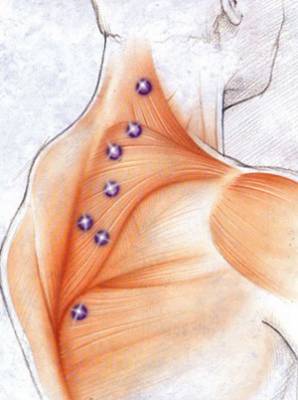
Trigger point injection is used to treat extremely painful areas of a muscle, which are characterized by the presence of the trigger points. A trigger point is a traumatized area in the muscle, feels like a knot or a tight, taut band of the muscle, and it is tender to deep pressure or palpation.
These trigger points may occur in any area of the body but most commonly they develop in the neck, shoulders and low back.
The trigger point can trap and irritate surrounding nerves and causes a referred pain i.e. pain felt in another part but with close proximity to the original site. Multiple trigger points may have overlapping areas of referred pain.
The presence of trigger points could be the primary muscle problem or could be secondary to trauma, scar tissue formation, fibromyalgia, surgery and many other conditions.
Procedure:
The trigger point injections are a simple procedure performed in the office. The physician examines the patient and the painful involved area to identify the trigger points. After cleansing the skin, a small needle is entered into the trigger point. The injection may cause a twitch or mild pain that lasts from a few seconds to a few minutes.
Aftercare:
Soreness from multiple needle sticks may respond well to an ice pack or massage. Numbness from local anesthetic may last about an hour. We strongly recommend ice, massage and stretching exercises for several days following the procedure.
Complications:
They are remote, but may include but not limited to infection, bleeding, puncture the lung or the pleura (the surrounding membrane of the lungs) if done near the rib cage or at the neck, failure to alleviate the pain, or increase of the pain.
You will be advised to contact our office if any exaggerated swelling, redness, fever or shortness of breath develop following the procedure.







